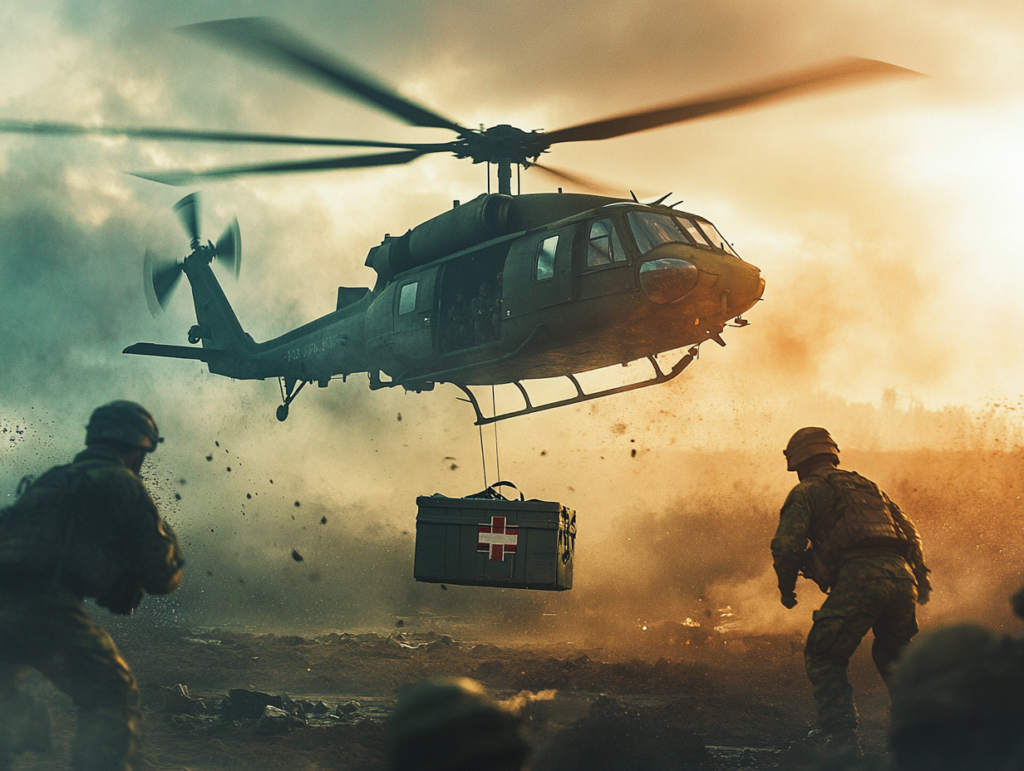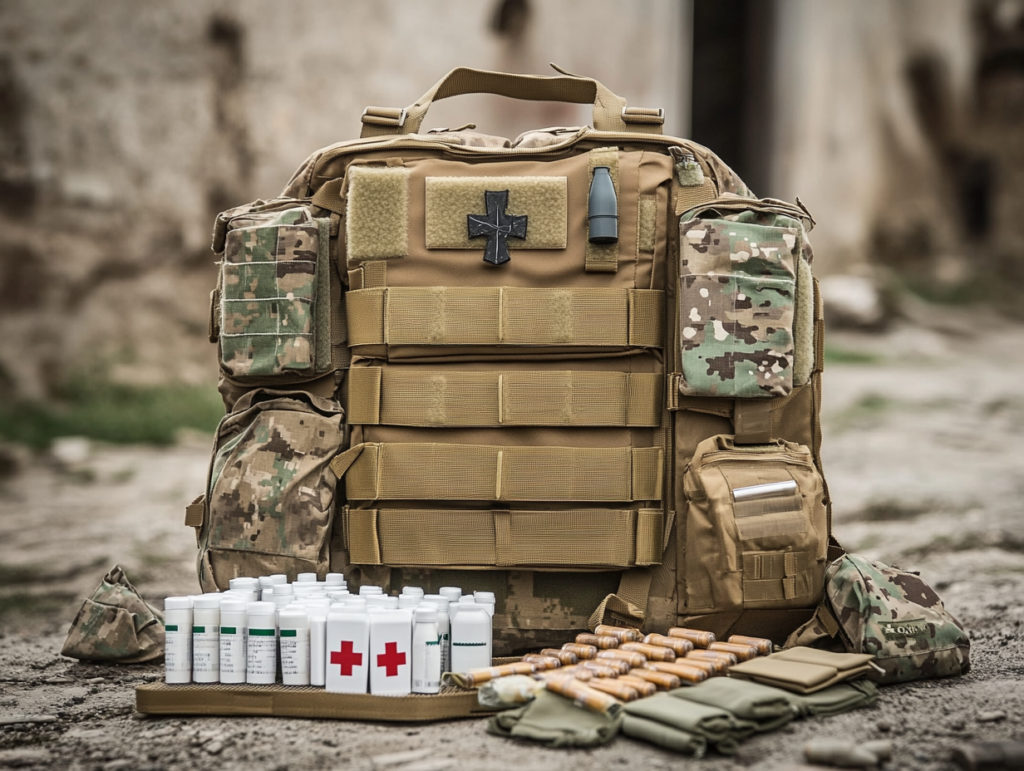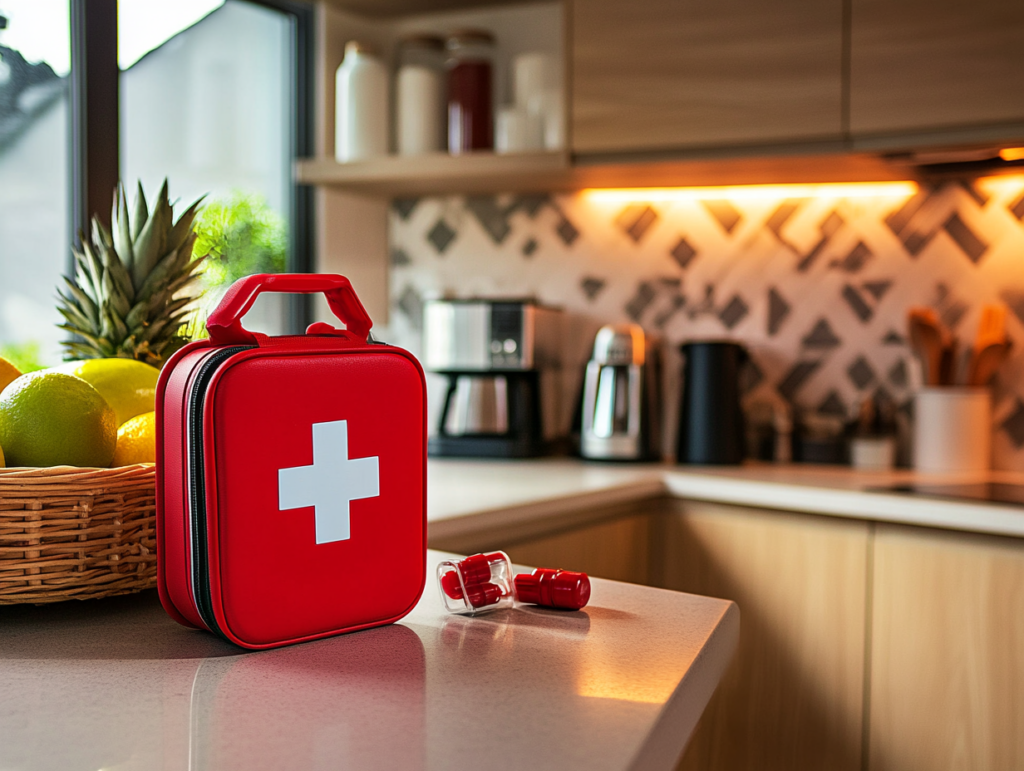As global security situations become increasingly complex and emergency preparedness grows in importance, military tactical first aid kits are gradually transitioning from the battlefield to broader commercial markets.
These kits, valued for their portability, durability, and efficiency, serve not only military and law enforcement sectors but also attract diverse customer groups such as outdoor adventurers, survivalists, and private security companies.
This article delves into the market outlook for military tactical first aid kits, how B2B channels can seize opportunities in tactical medical supplies, and how future technologies will drive innovation and upgrades in this field.
Market Outlook for Military Tactical First Aid Kits
Military tactical first aid kits are specially designed medical equipment for combat or tactical environments, containing essential supplies such as tourniquets, bandages, and disinfectants to provide quick, effective initial treatment for casualties. As global emphasis on security and emergency preparedness increases, the demand for these kits is rapidly expanding.
1. Growing Demand from Military and Law Enforcement
The rise in global military spending provides a stable demand for tactical first aid kits. According to the Stockholm International Peace Research Institute (SIPRI), global military expenditure reached $2.1 trillion in 2022, with the United States leading at $877 billion.
These funds are used not only for weapon development but also for upgrading soldier equipment, and tactical first aid kits naturally benefit from this trend. For instance, every U.S. soldier is equipped with an Individual First Aid Kit (IFAK) as part of their standard gear, which directly drives large-scale procurement of such products.
The law enforcement sector is also growing rapidly. Police, SWAT teams, and border patrol units are increasingly exposed to threats in high-risk operations, leading to a surge in demand for portable and efficient first aid equipment. For example, U.S. police departments have begun equipping officers with tactical first aid kits in response to frequent shootings, improving survival rates in emergencies.
2. Rise of the Civilian Market
In addition to traditional customers, the civilian market is emerging as a new growth area for tactical first aid kits. Outdoor enthusiasts, hikers, campers, and survivalists show strong interest in high-performance first aid gear.
The frequency of natural disasters, such as hurricanes and earthquakes, has further fueled individuals’ and families’ focus on emergency preparedness. Additionally, private security companies are increasingly purchasing tactical first aid kits in bulk to handle increasingly complex security tasks.
Market research indicates that the global tactical medical supplies market is expected to reach $17.27 billion by 2030, with a compound annual growth rate (CAGR) exceeding 4.72%. This growth stems not only from military demand but also from the rapid penetration of the civilian market.
3. Driving and Restricting Factors
The growth drivers include the rise in global security threats, increased emergency awareness, and technological advancements. However, the market also faces challenges. Strict regulatory standards (such as FDA certification in the U.S. or CE certification in the EU) can increase compliance costs for companies. Additionally, fierce market competition and price pressure may pose barriers for new entrants.
How Can B2B Channels Capitalize on Tactical Medical Supply Opportunities?
The B2B (business-to-business) model has a natural advantage in promoting and selling tactical medical supplies. By leveraging efficient supply chain management and precise market positioning, businesses can effectively tap into this highly potential market.
1. Efficient Empowerment through B2B E-commerce
Traditional B2B transactions relied on offline negotiations and cumbersome procurement processes, but the rise of e-commerce platforms has transformed this landscape. Through B2B platforms, businesses can achieve digital management of orders, logistics tracking, and payment settlements.
For example, China’s Shushangyun platform provides a full-chain solution for the medical device industry, helping companies reduce transaction costs and enhance efficiency. Additionally, these platforms can provide big data analysis to help businesses gain insights into market demand, optimize product design, and refine marketing strategies.
For tactical first aid kits, companies can use B2B platforms to directly connect with military contractors or law enforcement agencies for bulk custom orders and fast delivery. This model not only shortens the supply chain cycle but also strengthens customer loyalty.
2. Building Partnerships and Distribution Networks
A successful B2B strategy relies on strong partnerships. Businesses can expand market coverage by partnering with military suppliers, medical device distributors, or emergency organizations.
For example, participating in international military and police equipment exhibitions, such as the SHOT Show in the U.S. or the Zhuhai Airshow in China, is an excellent opportunity to connect with potential customers and showcase products. In the 2022 Zhuhai Airshow, China displayed foreign trade equipment, including tactical medical supplies, attracting international buyers’ attention.
In addition, establishing regional distribution networks can effectively reduce logistics costs and improve service response time. For instance, setting up distributors in conflict-prone regions like Southeast Asia or the Middle East can quickly meet local military and civilian demand.
3. Customization and Targeted Marketing
The demand for tactical first aid kits varies depending on the customer group. Military clients may require antibacterial gauze and tactical tourniquets, while civilian customers may prioritize portability and ease of use.
Therefore, businesses need to offer customized products and employ specialized marketing strategies to attract target customers. For example, a “rapid deployment first aid kit” could be marketed to law enforcement agencies, while “lightweight design” and “multi-scenario applicability” could appeal to the outdoor market.
How Will Future Technologies Drive Tactical First Aid Product Upgrades?
The rapid development of technology is injecting new life into tactical first aid kits. From material innovation to intelligent applications, future first aid products will become more efficient, intelligent, and user-friendly.
1. Breakthroughs in Materials
Lightweight design and durability are core principles in the design of tactical first aid kits. New materials, such as carbon fiber and high-strength polymers, can significantly reduce the weight of the kits while maintaining impact resistance and waterproof capabilities.
Additionally, the application of smart materials shows great potential. For example, self-healing coatings can automatically repair damage on the surface of the first aid kit, while thermosensitive materials can adjust the internal storage conditions of medical supplies based on environmental temperature.
2. Smart Integration with the Internet of Things
The integration of artificial intelligence (AI) and the Internet of Things (IoT) will completely transform the functionality of first aid kits. For instance, a smart first aid kit may monitor a casualty’s heart rate, blood pressure, and other vital signs through built-in sensors and provide real-time guidance via a mobile app. AI-assisted systems can also generate first aid instructions for non-professional users, lowering the operation threshold.
In military contexts, the use of drone technology is particularly notable. The Chinese Joint Logistics Support Force’s 962nd Hospital has successfully tested the use of drones to deliver first aid kits to the front lines. This technology not only shortens rescue times but also enables contactless medical support in hazardous areas.
3. Advancements in Medical Technology
New hemostatic agents (such as clotting powders) and portable diagnostic devices (such as handheld ultrasounds) are enhancing the treatment capabilities of tactical first aid kits.
Moreover, as telemedicine advances, soldiers on the front lines can receive guidance from doctors in the rear through video calls. In the future, biotechnology may even provide implantable first aid devices to offer extended life support for casualties.
Conclusion
The commercial potential and market opportunities for military tactical first aid kits are at a tipping point. The steady growth in military and law enforcement demand, the rapid expansion of the civilian market, and the continuous empowerment of technology are collectively driving the market’s outlook.
For businesses, optimizing supply chains through B2B channels, focusing on customized services, and staying aligned with technological trends will be key to seizing market opportunities.
In the future, as smart and medical technologies continue to merge, tactical first aid kits will not only save lives on the battlefield but also become indispensable life-saving tools in the civilian sector.
What are your thoughts on the future of this market? Feel free to share your insights in the comments section!


